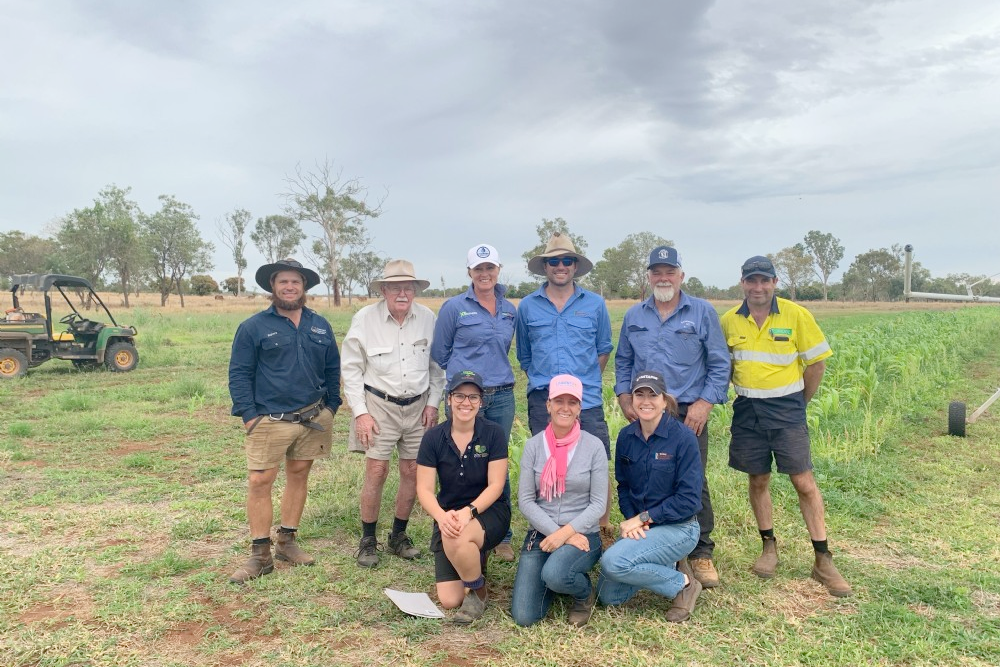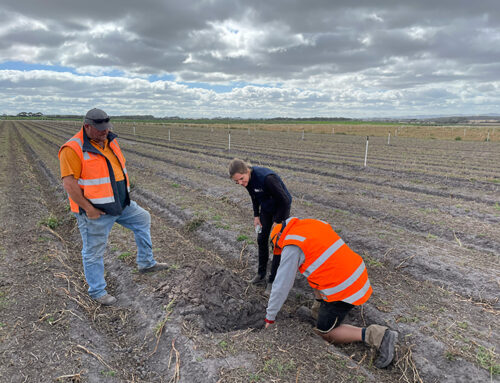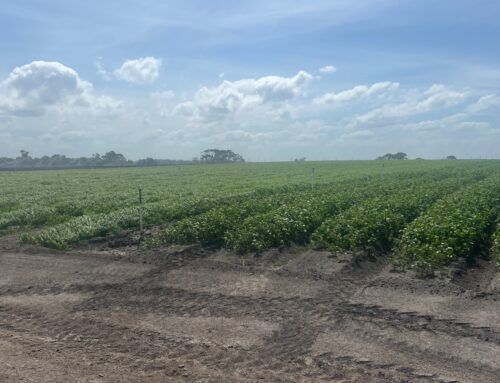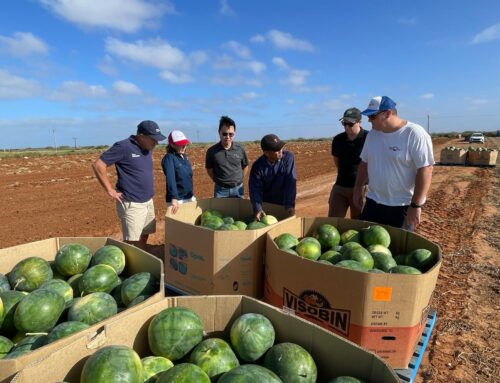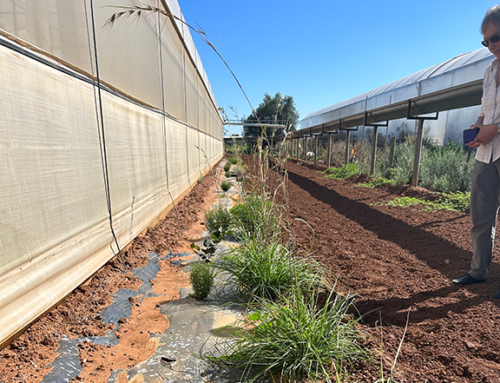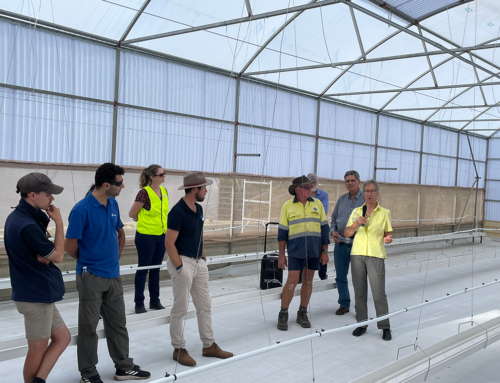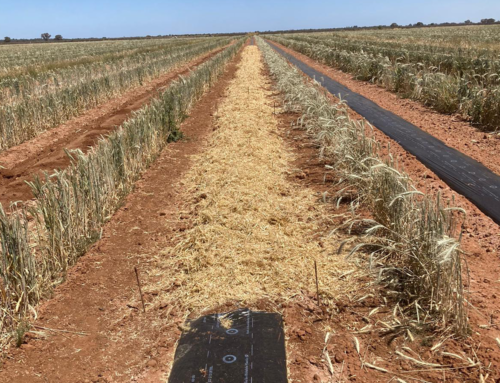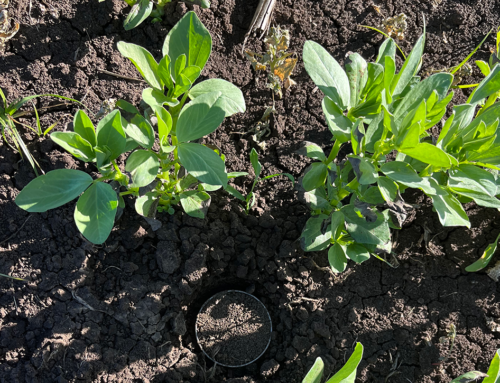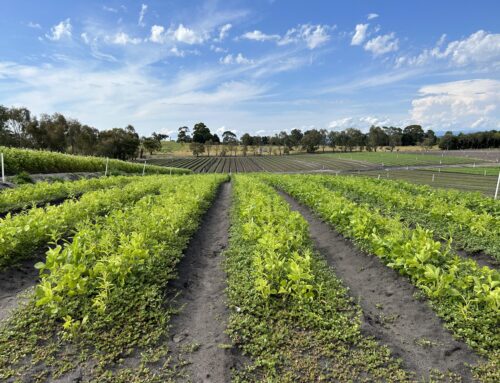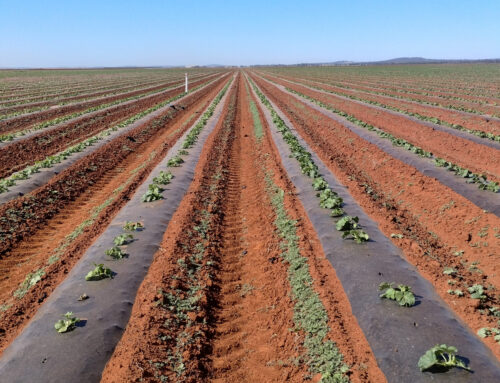On 27 June, a group of growers and industry members attended an inaugural field walk at the Soil Wealth ICP demonstration site in the Northern Territory.
Hosted by grower Jeremy Trembath in Katherine, the demonstration site has focused on improving soil health and building soil resilience to weather events, particularly during the wet season, to prevent erosion and to protect soils.
To achieve this, Jeremy has used cover crops and reduced tillage in preparation for his sweet corn cash crop, and has utilised an integrated approach to pest, disease and weed management.
While Jeremy’s operation is predominately livestock, vegetable production has expanded in recent years.
Field walk attendees with demonstration site grower Jeremy Trembath (pictured far left).
Building learnings and connections
The field walk aimed to share the learnings of the demonstration site so far and to better understand the challenges unique to vegetable growers in the Northern Territory.
Jeremy explained his approach to vegetable farming and attendees observed the demonstration area which has several small blocks of sweet corn planted at different times. The sweet corn is under sown with lucerne to protect the soil, with sabi and jarra grass planted between the blocks. Some areas of the paddock had bare soil before Jeremy had utilised the paddock.
In June 2021, Jeremy planted a mixed cover crop with:
• Legumes (sunn hemp, lablab, blue pea, cow pea, cavalcade all with rhizobial inoculants)
• Grasses (oats, millet, rhodes grass)
• Broadleaf (sunflower)
• Biofumigant (jackhammer radish 2%).
The use of cover crops has produced a range of benefits including protecting the soil from erosion, retaining soil moisture and nutrients, and building organic matter, soil structure and soil biology levels.
Attendees witnessed the clear differences in root presence and soil structure for areas of the paddock where a cover crop was planted compared to areas of bare soil.
L-R: Sweet corn crop, under sown with lucerne; and a comparison of soils with no cover crops (left) and soils with sweet corn and lucerne (right).
Additional discussions included the learnings associated with competition between cover crops and cash crops, the role of cover crops in disease management and the presence of beneficial mycorrhizal fungi in root samples taken at the site.
Jeremy also shared his approach of using minimum tillage and its benefits, as well as his management of fall armyworm which is supported by the biodiversity of beneficial insect species in the area.
The field walk provided an excellent opportunity for attendees to build their knowledge and networks. The Soil Wealth ICP team would like to thank Jeremy for hosting the event and sharing his learnings with the group, and NT Farmers for their support.
More information
Read more about Jeremy’s story in the Winter 2022 edition of Vegetables Australia magazine (P 48) and stay updated on the latest news from the Katherine demonstration site.
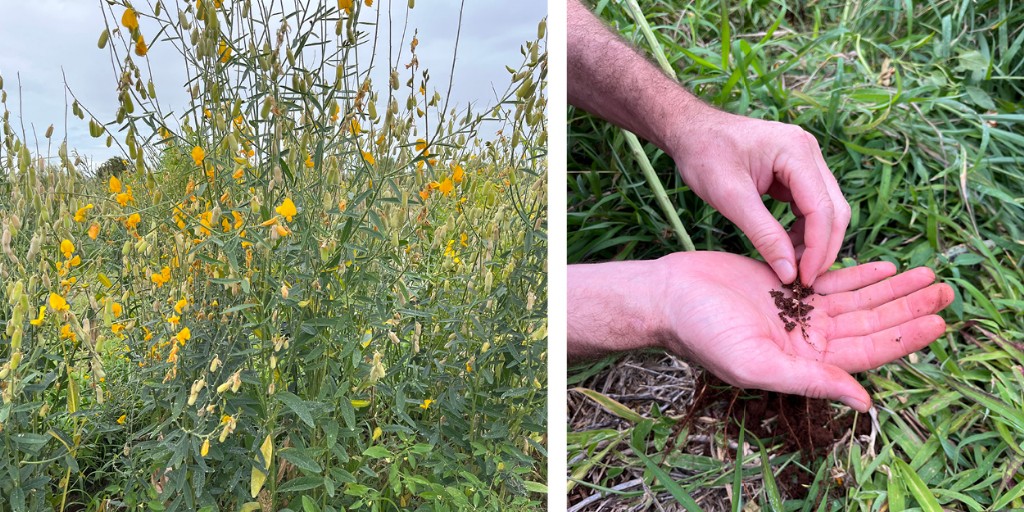
L-R: Sunn hemp cover crop; and nodules on sunn hemp roots.

